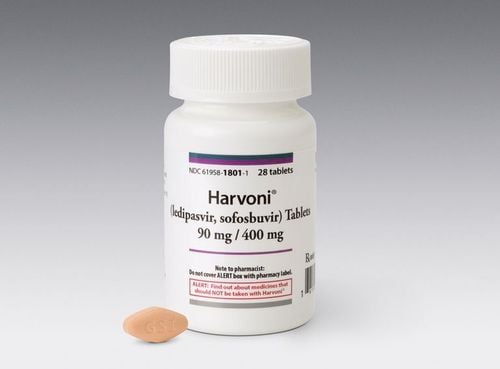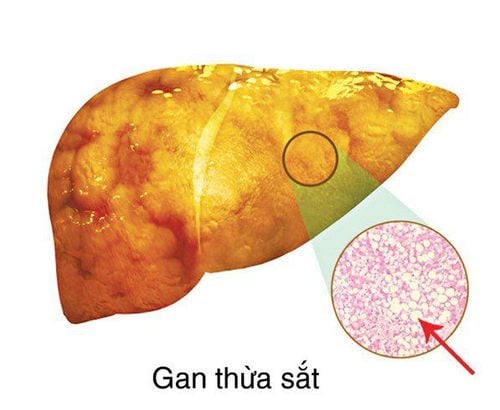This is an automatically translated article.
Most people infected with the hepatitis C virus become chronic and are at risk of iron overload. Consequences of too much iron storage will lead to hepatocellular carcinoma, type 2 diabetes, heart failure,...1. What kind of disease is hepatitis C?
Hepatitis C is an infectious disease caused by the hepatitis virus, which is transmitted mainly by blood. When the HCV virus enters the body, they have a rather long incubation period of 7-8 weeks, after which the onset period begins. Most patients with acute hepatitis C have few symptoms. Patients feel fatigue, headache and some flu-like symptoms, which may be accompanied by yellowing of the skin, eyes, dark urine, ...Chronic hepatitis C accounts for a much higher rate compared with hepatitis B (hepatitis C has a rate of about 30 - 60%, while this rate of hepatitis B is only 10%). Hepatitis C usually progresses silently and lasts from 10-30 years, so people are often not diagnosed and treated in time. Chronic hepatitis can lead to iron overload in the liver and is at risk of dangerous complications such as cirrhosis, liver cancer,...
MORE: Hepatitis C: Possibility to progress to cirrhosis chronic liver disease, cirrhosis, liver cancer
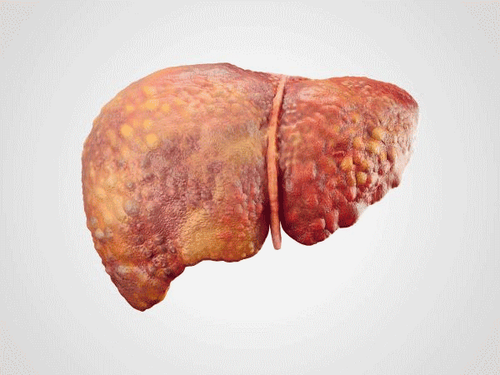
Viêm gan C xảy ra do virus Hepatitis tấn công
2. The relationship between iron overload and hepatitis C
2.1 Iron metabolism
Iron is an important trace element in the human body. In the human body, iron is important for maintaining the basic function of many proteins. Dietary iron is absorbed via divalent metal transporter 1 (DMT1), a multimembrane protein, or heme 1 carrier protein on duodenal and jejunal enterocytes. It is then released by ferroportin (FPN) to bind to transferrin in the blood and taken to red blood cells to form red blood cells.
Unused iron can also be stored as ferritin or hemosiderin in enterocytes, macrophages and liver cells. There is no efficient physiological mechanism for iron excretion, some iron (about 2 mg per day) is lost through shedding of intestinal epithelial cells, shedding of skin and urinary cells, blood loss and sweat.
Iron homeostasis in the human body is mainly regulated by the hepcidin/FPN system and iron regulatory protein/iron response factor (IRP/IRE). Hepcidin is a peptide hormone mainly secreted by the liver. As iron levels increase, hepcidin negatively regulates iron levels by binding to FPN and promoting FPN internalization and degradation. This reduces the amount of iron absorbed by enterocytes that is released by hepatocytes and recycled from macrophages, ultimately reducing transferrin levels in the blood. Conversely, when iron levels decrease, hepcidin is adjusted to improve transferrin levels. Transferrin receptor 1 (TfR1) and bone morphogenetic protein receptor 6 can sense transferrin saturation (TS) and tissue iron content, respectively, further regulating hepcidin levels. Hepcidin may also be affected by other factors, including inflammation, erythropoietic activity of the bone marrow, and oxygen tension in hepatocytes. While hepcidin regulates transcriptional and post-metabolic systemic iron metabolism, intracellular iron metabolism is regulated by the post-described IRP/IRE system. The IRP/IRE system alters the expression of proteins involved in iron metabolism, such as ferritin, FPN, hypoxia-inducible factor 2β (HIF2β/EPAS1), DMT1, TfR1 and others.
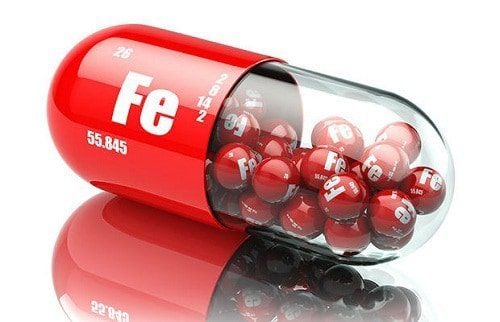
Sắt chuyển hóa thế nào trong cơ thể?
2.2 Iron overload in patients with hepatitis C
In a study of 100 consecutive HCV-infected patients undergoing liver biopsy, 19 were found to be positive for intrahepatic iron staining, which is associated with stage III or IV fibrosis. 55 patients had at least one abnormal value of SI, ferritin, or TS. In multivariate analysis, the only independent predictor of severe cirrhosis was serum ferritin. Serum ferritin values and tissue iron were significantly positively correlated.However, elevated serum ferritin can also be caused by hepatitis. In 1994, a study of 123 patients with chronic hepatitis showed increased SI, iron saturation, and ferritin in HCV-infected patients, while no evidence of liver iron accumulation was found in any of the patients. . In this study, serum ferritin was elevated in the absence of hepatic iron overload, suggesting that elevated serum ferritin may also be caused by inflammation itself. Therefore, elevated ferritin reflects iron accumulation in the liver, as well as liver inflammation, and predicts severe liver fibrosis. In other words, accumulation of iron in the liver can lead to increased ferritin, while elevated ferritin is not only caused by iron accumulation in the liver but also by hepatitis.
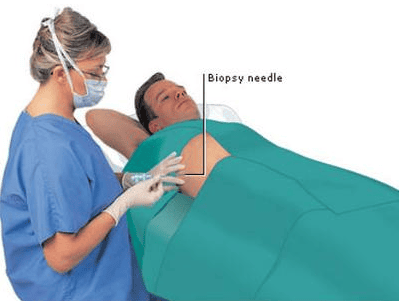
Sinh thiết gan giúp xác định tình trạng quá tải sắt trên bệnh nhân viêm gan C
In summary, to date increasing literature demonstrates that hepatitis C virus infection leads to iron overload and that iron in turn affects HCV life cycle. Further studies are needed to elucidate the mechanism involved in the complex interaction between iron and HCV.
To ensure health and diagnose liver diseases early, now Vinmec International Hospital has provided customers with a package of screening and early detection of liver cancer to screen for liver cancer. people at high risk of diseases such as: alcohol abuse, cirrhosis, family history of liver cancer, cirrhosis, hepatitis B virus infection, chronic hepatitis C infection,...
Selection Service Package for screening and early detection of liver cancer, patients will be examined, consulted and performed tests and diagnostic imaging to assess liver function, liver diseases and liver cancer screening . With a system of modern machinery and a team of highly qualified and experienced doctors, Vinmec is committed to the best protection for the health of patients.
Please dial HOTLINE for more information or register for an appointment HERE. Download MyVinmec app to make appointments faster and to manage your bookings easily.
References: ncbi.nlm.nih.gov, .medscape.com,





